

Kasnyik rodinné vinárstvo, Južnoslovenská, Slovakia
“We try to make Strekov wine, that's all.”
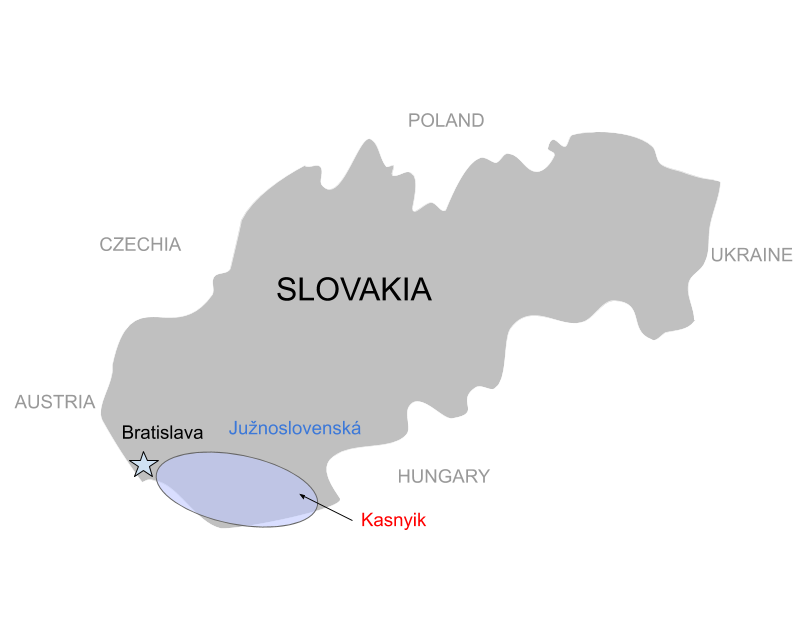
At a Glance
2005
https://kasnyikwine.sk/
Južnoslovenská
Continental (hot summers & cold winters)
Calcareous and loamy-clay
200-250m
Rugged hills
Riesling, Rizling Vlašský, Tramín Červený, Grüner Veltlíner, Chardonnay
6 hectares
Certified Organic
Natural
https://kasnyikwine.sk/
Južnoslovenská
Continental (hot summers & cold winters)
Calcareous and loamy-clay
200-250m
Rugged hills
Riesling, Rizling Vlašský, Tramín Červený, Grüner Veltlíner, Chardonnay
6 hectares
Certified Organic
Natural

The Kasnyik family - Credit Kasnyik rodinné vinárstvo
The Appellation
The Kasnyik family is one of the founding members of the “Autentista Slovakia” association that has now grown to include 5 producers including Slobodné Vinárstvo, Magula, Mátyás, and Strekov 1075.

Autentista Logo
I had first heard about this association because they hold a natural wine festival called the “Authentic Yard” which also celebrates music, food, and culminates with a few winemakers (one of which is Gábor Karner) on full drum kits jamming outside around a massive bonfire. The association has strict guidelines on farming, cellar practices, and how to ultimately restore and preserve the culture of wine along the Danube. They also have a detailed Charta that lays out how to undo the damage done during the Communist COOP era and once again farm and make wine that as they put it, “unite and symbolize us.”
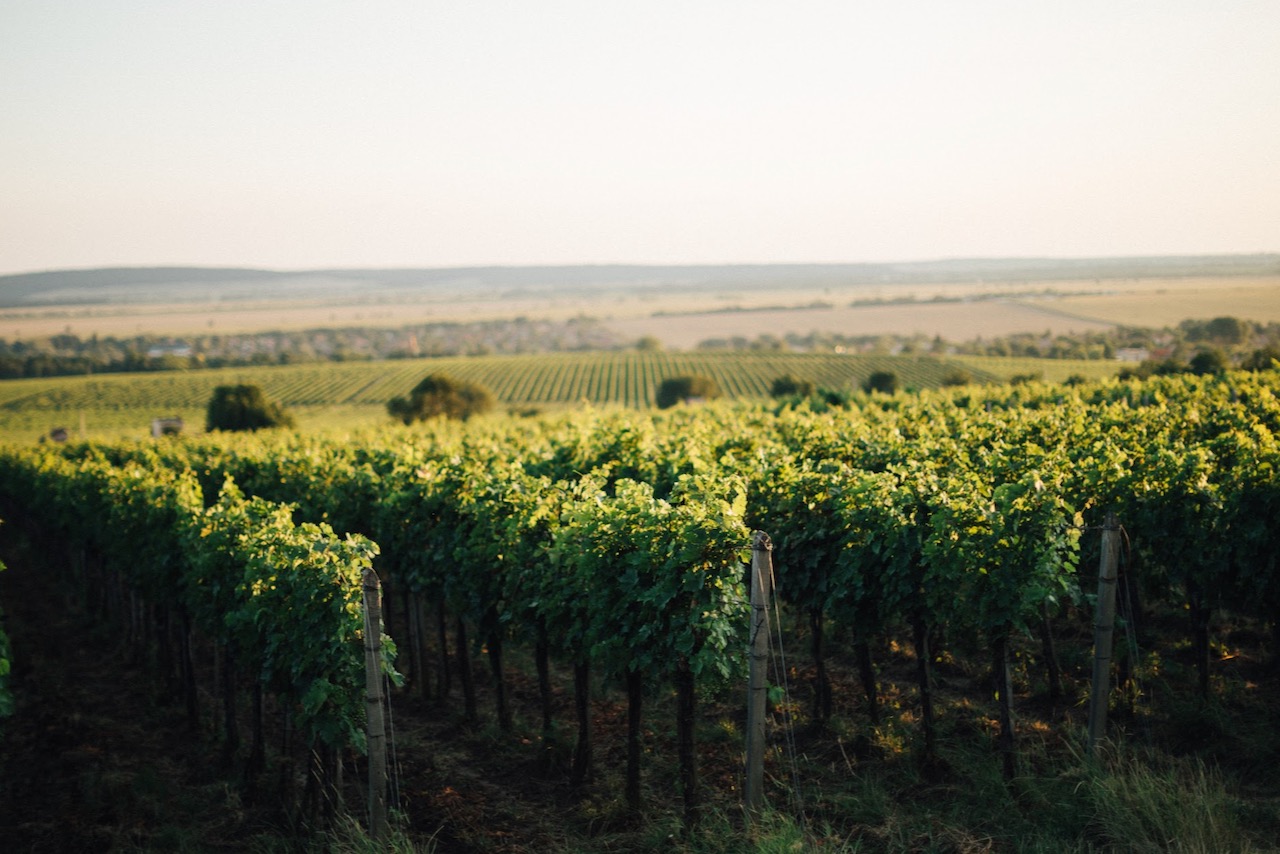
Spring at Kasnyik - Credit Kasnyik rodinné vinárstvo
The area is very much a crossroads in Central Europe and the epicenter of winemaking in Slovakia. Strekov was first mentioned in 1075, but has more recently been influenced by the Kingdom of Hungary, the Austro-Hungarian Empire, the Ottoman Empire, Czechoslovakia, attempted Germanization by the Nazi’s, briefly back to Hungary, back to Czechoslovakia under Communist rule, and then finally becoming independent after the Velvet Revolution in 1989. As with so much of this portfolio, we’ve found that wine regions along and within contentious borders are almost always bound to result in something special.

Autentista Logo
I had first heard about this association because they hold a natural wine festival called the “Authentic Yard” which also celebrates music, food, and culminates with a few winemakers (one of which is Gábor Karner) on full drum kits jamming outside around a massive bonfire. The association has strict guidelines on farming, cellar practices, and how to ultimately restore and preserve the culture of wine along the Danube. They also have a detailed Charta that lays out how to undo the damage done during the Communist COOP era and once again farm and make wine that as they put it, “unite and symbolize us.”

Spring at Kasnyik - Credit Kasnyik rodinné vinárstvo
The area is very much a crossroads in Central Europe and the epicenter of winemaking in Slovakia. Strekov was first mentioned in 1075, but has more recently been influenced by the Kingdom of Hungary, the Austro-Hungarian Empire, the Ottoman Empire, Czechoslovakia, attempted Germanization by the Nazi’s, briefly back to Hungary, back to Czechoslovakia under Communist rule, and then finally becoming independent after the Velvet Revolution in 1989. As with so much of this portfolio, we’ve found that wine regions along and within contentious borders are almost always bound to result in something special.
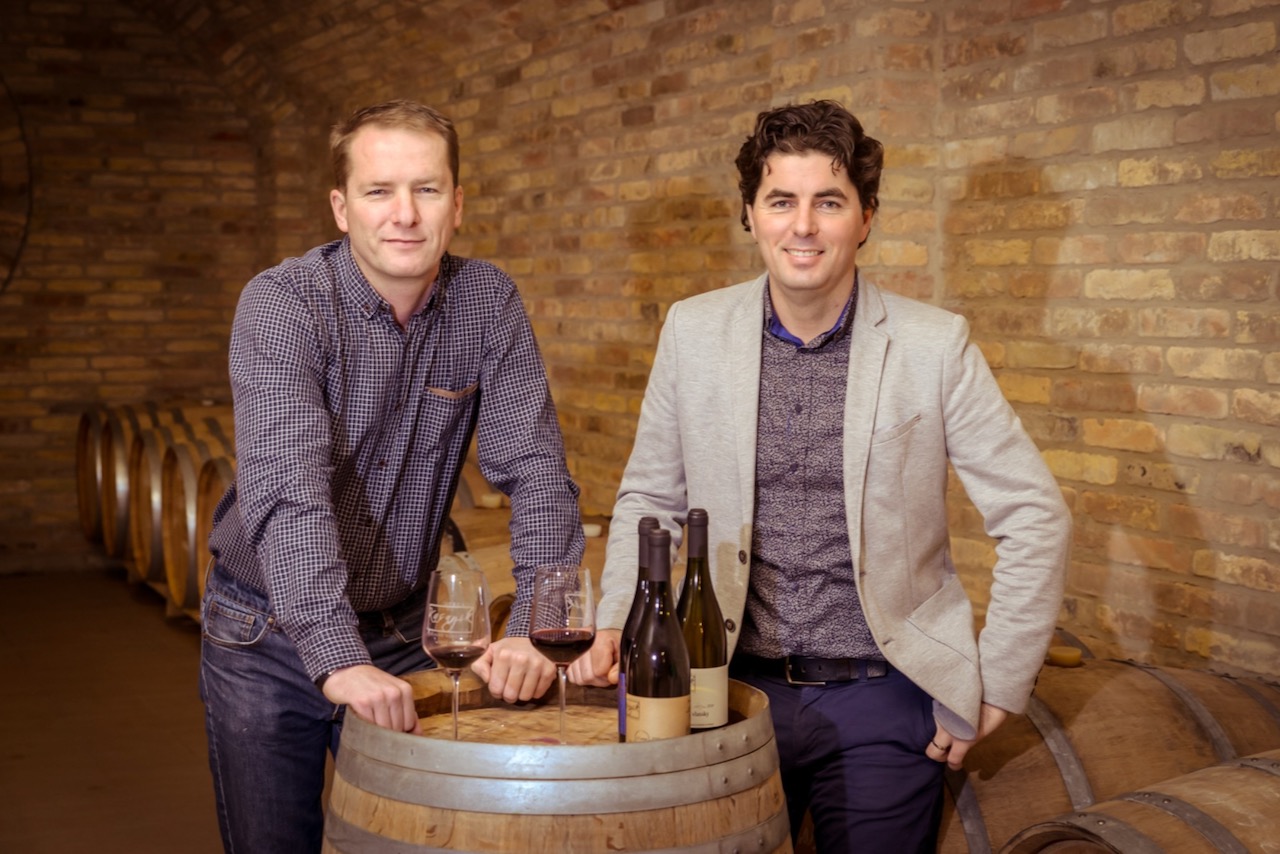
Brothers Gábor and Tamás Kasnyik - Credit Kasnyik rodinné vinárstvo
The People
Brothers Gábor and Tamás along with Gábor’s wife Virág are emblematic of this sentiment. The Kasnyik family is involved with, connected to, and invested in the success of Slovakian wine as a whole. In addition to the winery, Tamás is also the director of an agriculture association that organizes the largest wine festival in Slovakia with over 10,000+ attendees. Coupled with the aforementioned Autentista Slovakia, the Kasnyik family is involved with, connected to, and invested in the success of Slovakian wine as a whole.
We also owe a thank you to Bálint Losonci who vetted both parties, recommended we connect, and ultimately introduced us. Similar to Bálint, it’s obvious that everything the Kasnyik family is doing is with generational thinking in mind. The health of the soil, preserving native grapes, and creating a good life that surrounds it all are paramount. It also helps that the wines are delicious. We are just starting to dig into what they are doing.
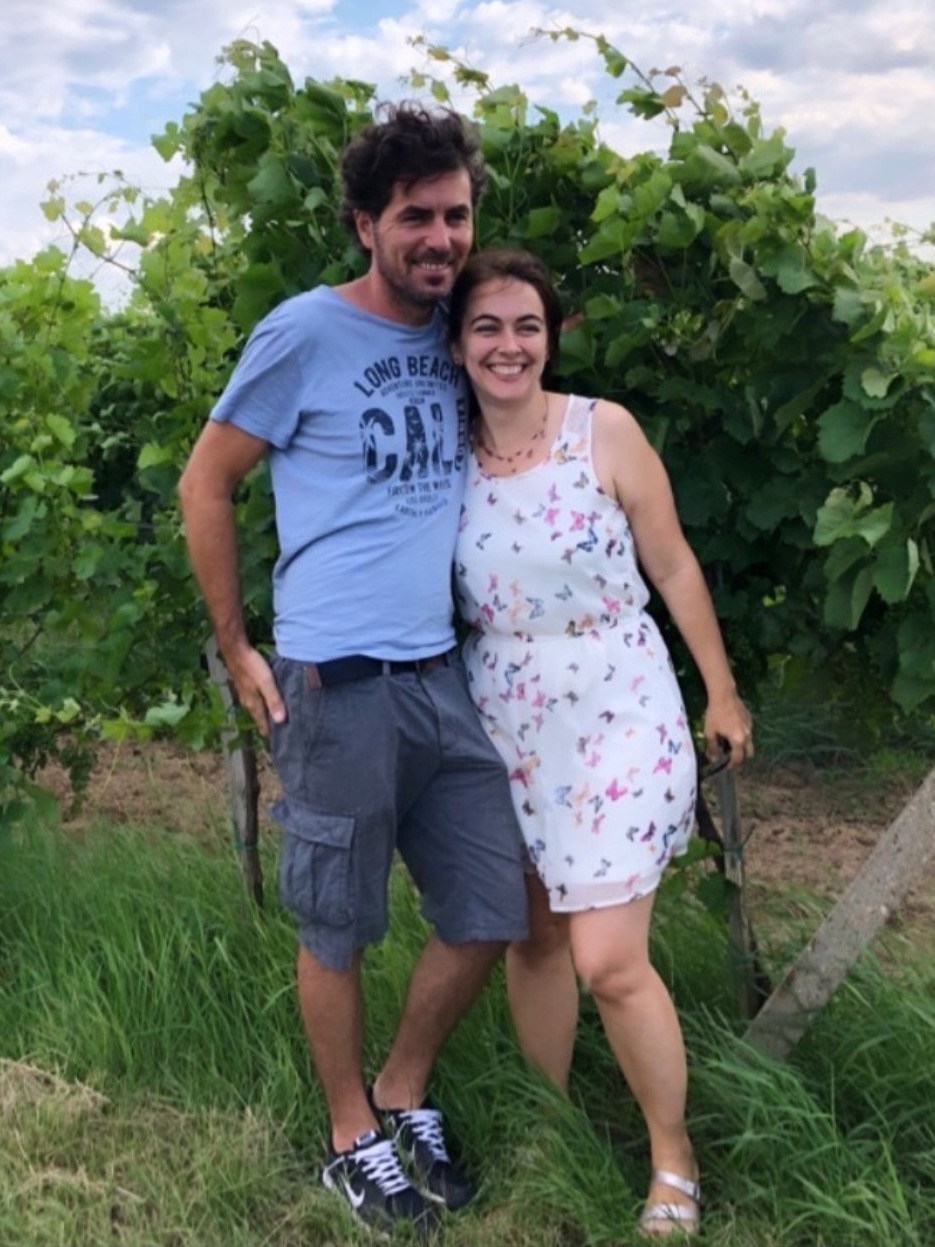
Gábor and Virág in the vineyard - Credit Kasnyik rodinné vinárstvo
Founded in 2004, real change came in 2008 when they began firmly transitioning to organic farming (certified in 2014) with a focus on native grapes fermented and aged exclusively in oak. The COOP era had left many of the best vineyards largely forgotten, the rest farmed industrially, and native grapes and winemaking traditions were ripe for resuscitation. Keeping all of this in mind, their overarching goal is to bring back the unique wildness that is the connective genius loci of their region.
We also owe a thank you to Bálint Losonci who vetted both parties, recommended we connect, and ultimately introduced us. Similar to Bálint, it’s obvious that everything the Kasnyik family is doing is with generational thinking in mind. The health of the soil, preserving native grapes, and creating a good life that surrounds it all are paramount. It also helps that the wines are delicious. We are just starting to dig into what they are doing.

Gábor and Virág in the vineyard - Credit Kasnyik rodinné vinárstvo
Founded in 2004, real change came in 2008 when they began firmly transitioning to organic farming (certified in 2014) with a focus on native grapes fermented and aged exclusively in oak. The COOP era had left many of the best vineyards largely forgotten, the rest farmed industrially, and native grapes and winemaking traditions were ripe for resuscitation. Keeping all of this in mind, their overarching goal is to bring back the unique wildness that is the connective genius loci of their region.
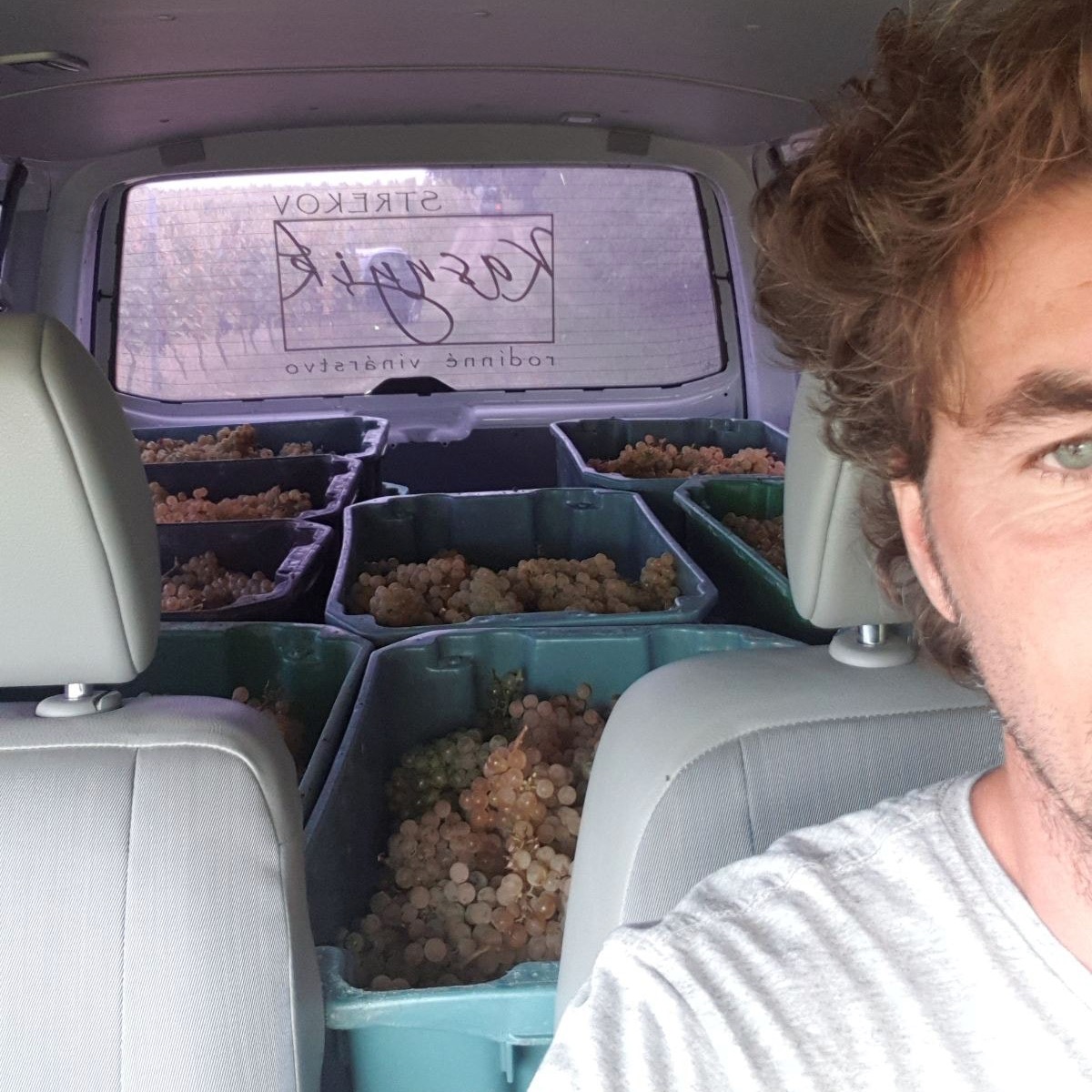
Harvest at Kasnyik - Credit Kasnyik rodinné vinárstvo
Vineyards
Strekov is one of the sunniest sub appellations in Južnoslovenská (Southern Slovakia). They farm 6 hectares in largely calcareous and loamy-clay soil between 200-250 meters above sea level. The main focus is on grapes like Ryzlink Vlašský (Olaszrizling), Veltlínske Zelené (Grüner Veltliner), Chardonnay, Devín, Ryzlink Rýnský (Rhine Riesling), Frankovka Modrá (Kékfrankos), Tramín Červený (Gewürztraminer), Dunaj, Alibernet, Cabernet Franc, Cabernet Sauvignon, Merlot and Pinot Noir.
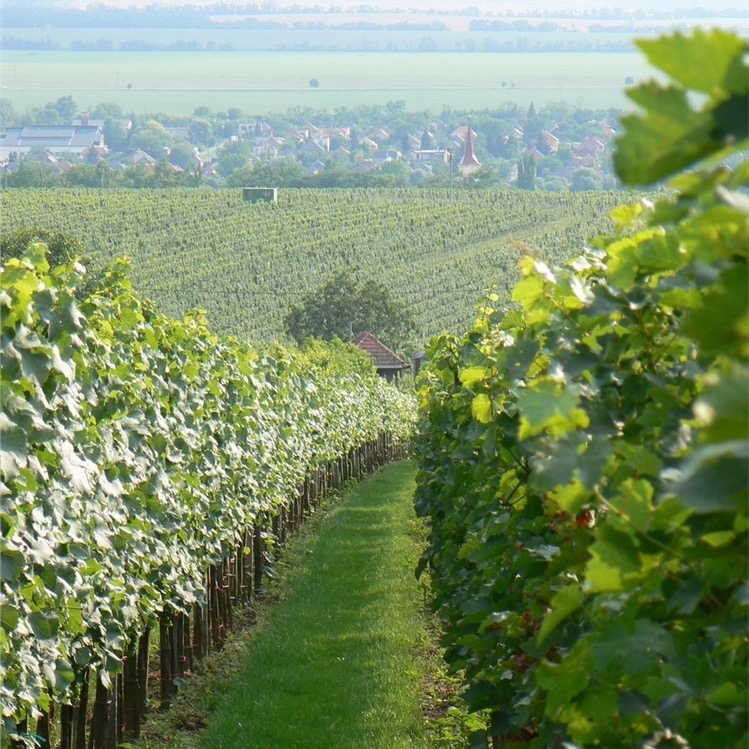
In the vineyard - Credit Kasnyik rodinné vinárstvo
They do not use herbicides, synthetic insecticides, acaricides or any systemic fungicides. Other things prohibited under their self-imposed charta include the use of synthetic fertilizers, a maximum yield of 40 hl per hectare and only harvesting by hand. New plantings must be at minimum 5000 plants per hectare and dedicated to Central European varieties.

In the vineyard - Credit Kasnyik rodinné vinárstvo
They do not use herbicides, synthetic insecticides, acaricides or any systemic fungicides. Other things prohibited under their self-imposed charta include the use of synthetic fertilizers, a maximum yield of 40 hl per hectare and only harvesting by hand. New plantings must be at minimum 5000 plants per hectare and dedicated to Central European varieties.
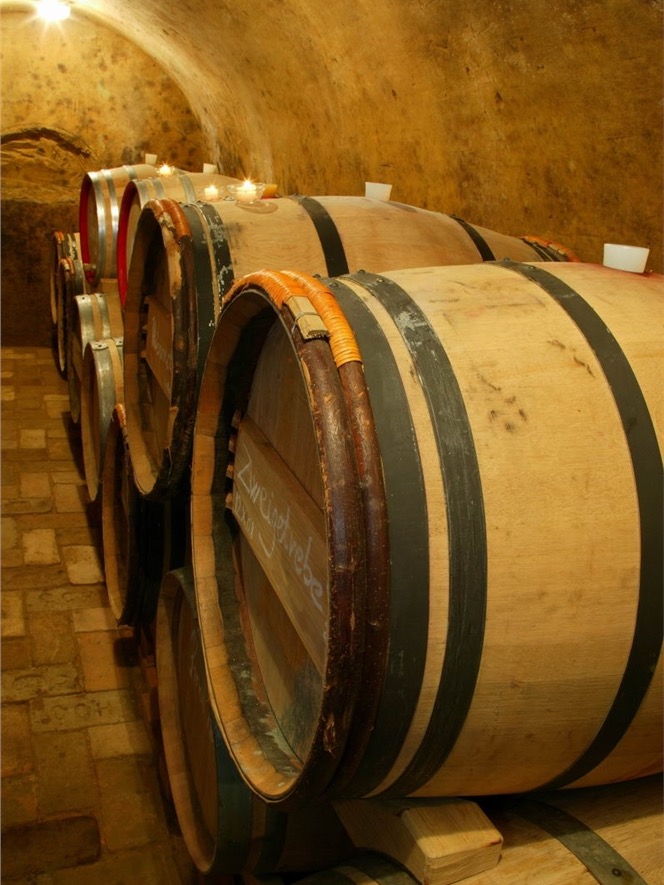
In the cellar - Credit Kasnyik rodinné vinárstvo
Winemaking
Gábor credits some early inspiration after tasting with Imre Kálo in Szomolya, Hungary. Imre is one of the characters of the Hungarian wine scene (we visited back in 2016), who has since the late 1980s been making what we now call natural wines. He also garnered some inspiration from Oszkár Maurer in Serbia in terms of low intervention and skin maceration. That said, Gábor’s wines are nothing like either of these, but the focus on spontaneous fermentation, skin maceration and patience in both the vineyard and cellar are certainly shared.
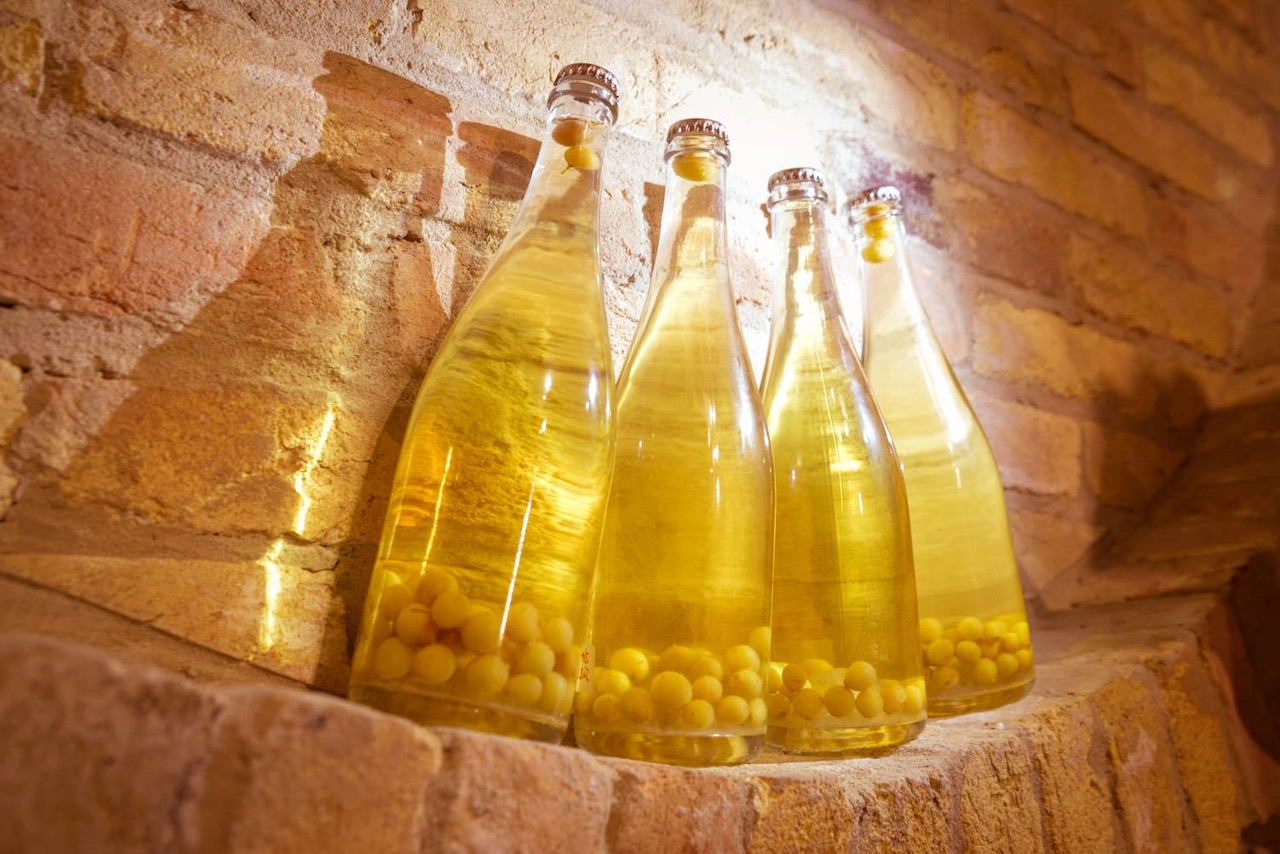
Photo Credit Kasnyik rodinné vinárstvo
Adhering to the Autentista Charta, nothing is added apart from SO2 at bottling (if at all), and filtration, centrifuges, temperature control, reverse osmosis, and so on are all also forbidden. All wines are fermented and aged in barrel (225L, 300L and 500L Hungarian) and aged between 7-12 months. Total production is about 30,000 bottles per year.

Photo Credit Kasnyik rodinné vinárstvo
Adhering to the Autentista Charta, nothing is added apart from SO2 at bottling (if at all), and filtration, centrifuges, temperature control, reverse osmosis, and so on are all also forbidden. All wines are fermented and aged in barrel (225L, 300L and 500L Hungarian) and aged between 7-12 months. Total production is about 30,000 bottles per year.

Red Wine , Organic
Blaufränkisch;
13.4%
1.2 g/l
6.43 g/l
Blaufränkisch;
13.4%
1.2 g/l
6.43 g/l
We have a severe weakness for this category of wine. This is no exception. Schiller (German spelling) is somewhere in between a light red and a rosé. Literally, it must “Shimmer” as the name suggests. This can be achieved in a variety of ways, but the general idea is to have the acidity and perhaps aromatics of a white wine with the grip, fruit and structure of a red. For Kasnyik, Frankovka Modra is ideally suited. Macerated for just 2 days and barrel fermented/aged, there’s still enough ripeness to coax out 13.5% alcohol while retaining crazy freshness. Also take into account that their cellar is 10 meters deep which allows for a nice slow fermentation. There’s nothing carbonic or hermetically sealed from oxygen, so it loves to see some oxygen, doesn’t need a deep chill, and gives you the best of both worlds without extended maceration. 1520 bottles produced.

Sparkling Wine , Organic
Gewürztraminer;
12.4%
1.5 g/l
6.41 g/l
Gewürztraminer;
12.4%
1.5 g/l
6.41 g/l
The last time we pulled up to the cellar, their good friend Laszlo was making a pot of Vadas over open fire. Vadas loosely translates to “hunter’s stew” and is basically a sweet and sour/wild Central European hybrid with gamey meat. Puréed carrots and parsnips along with a simple fruit syrup, Pálinka (fruit brandy), chunks of lamb, and finished with a little cream for balance. The first wine they handed us was this sparkling Tramín. 12 hours of maceration, native fermentation on the lees, and then at the end of fermentation, a later picked Tramín must was added for secondary fermentation. After 12 months of aging, it was disgorged with zero dosage, and bottled in 2020. It retains the skin contact elements of the Tramín, not just a blast of aromatics along with 12% alcohol. And because there’s not crazy acidity in the grape, the Brut Natur isn’t overly austere or hard to drink, it works exceptionally well. Much like their macerated version, a good foil for the Gewürztraminer hesitant. 830 bottles produced.

Red Wine , Organic
Dunaj;
15%
2.9 g/l
5.84 g/l
Dunaj;
15%
2.9 g/l
5.84 g/l
The Dunaj grape is seemingly incongruent between what you smell and what you taste. When we first encountered it, we assumed it was some sort of hybrid or PIWI grape. The Muscat-like aromas, deep Teinturier color, grip, acidity and alcohol didn’t seem possible with low intervention winemaking. As it turns out, it’s a crossing between Muscat Bouchet and Blauer Portugieser which was then crossed with St. Laurent. Its birth dates back to the early 1950s, but it didn’t become officially registered until the late 1990s. Late budding, late ripening, resistant to botrytis and frost, it certainly fits the bill for being applicable in Southern Slovakia. Today there are roughly 60-70 hectares in Slovakia and it’s the first to sell out at the winery. Spontaneously fermented in 700L vats and then aged on the lees for 11 months in smaller oak barrels, the only addition is SO2. This is one of those reds that you can’t quite put your finger on so you revisit it incessantly until it’s gone.

White Wine , Organic
Riesling;
13.3%
2.1 g/l
5.05 g/l
Riesling;
13.3%
2.1 g/l
5.05 g/l
100% Rhine Riesling, this spent slightly less time on the skins than the Rizling at just over 2 weeks in open vats. It was then barreled down on the lees for 9 months in Hungarian oak and then bottled unfiltered with a small addition of SO2 (~29ppm). It carries a familiar Riesling signature, but the aromatics and texture (just over 2g/l RS) and overall balance is something unique and delicious. Only 1600 bottles produced. This is a rare treat from north of the Danube.

White Wine , Organic
Riesling;
14.4%
2.8 g/l
5.68 g/l
Riesling;
14.4%
2.8 g/l
5.68 g/l
100% Rhine Riesling, this spent slightly less time on the skins than the Rizling at just over 2 weeks in open vats. It was then barreled down on the lees for 9 months in Hungarian oak and then bottled unfiltered with a small addition of SO2 (~29ppm). It carries a familiar Riesling signature, but the aromatics and texture and overall balance is something unique and delicious. This is a rare treat from north of the Danube.

White Wine , Organic
Welschriesling;
13.2%
1.7 g/l
6 g/l
Welschriesling;
13.2%
1.7 g/l
6 g/l
Rizling means Welschriesling/Olaszrizling unless you specify otherwise. It’s one of the most widely planted grapes in the Pannonian basin and you can find it ranging from Eiswein, sparkling, 2 liter plastic bottles at the supermarket, age-worthy dry wines, and increasingly as a great candidate for skin maceration. Hand picked and destemmed, Gábor spontaneously ferments on the skins in open vats until the cap falls. It’s then barreled down on the lees for as close to the next harvest as possible. He doesn’t like having empty barrels. Bottled unfiltered with a small addition of SO2.

White Wine , Organic
Gewürztraminer;
12.7%
1.5 g/l
6 g/l
Gewürztraminer;
12.7%
1.5 g/l
6 g/l
According to Gábor, “Orange wine is like living in the marine world” in that it must completely surround you like being underwater. The Tramín is exactly this, and has the most acidity, the least amount of residual sugar, and the lowest alcohol of the lineup. The aromatics are so pronounced that it feels like you’re being submerged in them, but they aren’t perfumed in an artificial way. Fermented on the skins in open vats for about 3 weeks, it spent a year on the lees in Hungarian barrel before being bottled unfiltered with a small addition of SO2.